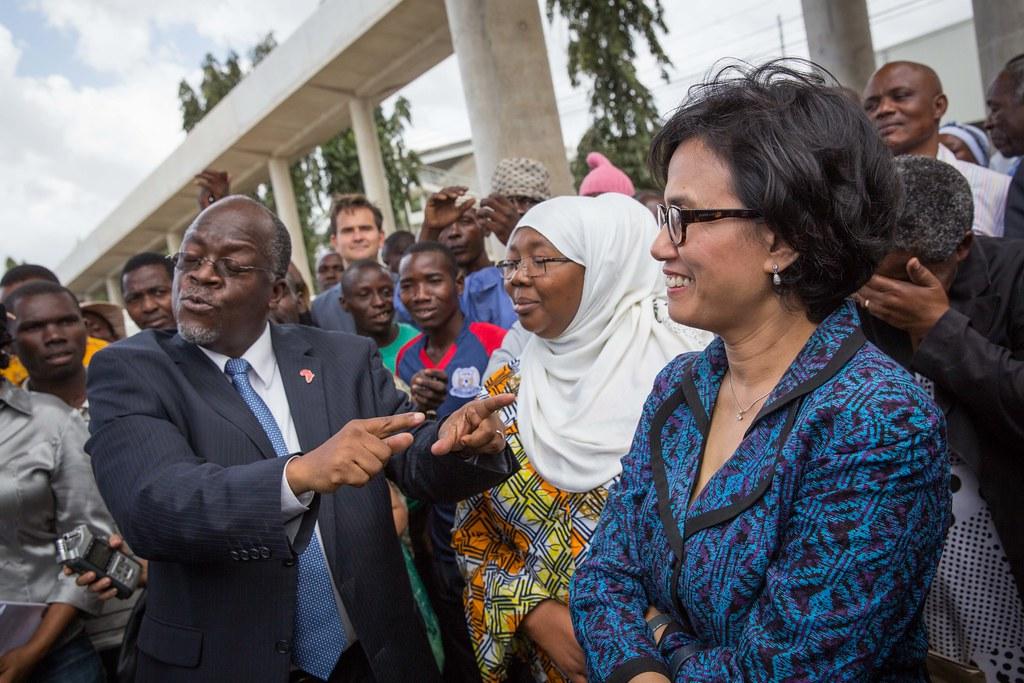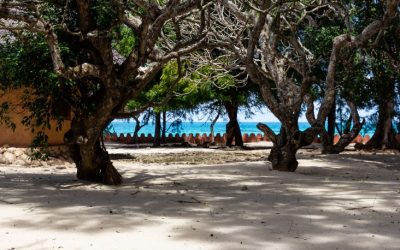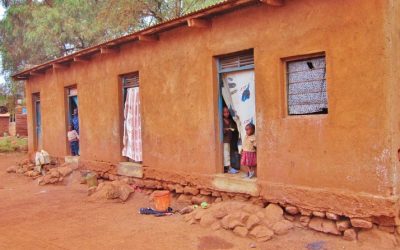Historical Background of Dodoma
Dodoma, the capital of Tanzania, has a rich historical background that reflects its development over centuries. Originally a small settlement, it gained prominence during the colonial era when it was chosen as the site for the country’s national administrative center. Its strategic location and growing importance eventually led to its designation as the official capital in 1973, marking a significant milestone in Tanzania’s journey towards independence and nationhood.
Origins and Early Settlement
Dodoma, the current capital of Tanzania, has a rich historical background rooted in its origins and early settlement. The area that is now Dodoma was initially inhabited by indigenous tribes such as the Gogo and Rangi people, who utilized the region for agriculture and trading. Its strategic location in central Tanzania made it an important hub for transportation and communication even before it gained prominence as a political center.
- In the early 20th century, Dodoma was chosen by British colonial authorities as a center for the Tanganyika Territory due to its central position and relative accessibility.
- During the colonial period, Dodoma developed slowly, mainly serving as an administrative and trading town rather than a major urban center.
- The name Dodoma is believed to derive from the Gogo word “Idodomola,” meaning “to gather” or “to collect,” reflecting its role as a gathering point for traders and local communities.
- After Tanzania’s independence in 1961, the government officially moved to develop Dodoma as the new national capital, shifting focus from Dar es Salaam to promote regional development and balance among the country’s regions.
- In 1973, the Tanzanian government formally designated Dodoma as the national capital, initiating infrastructure projects to transform it into the administrative and political hub of the country.
Colonial Era and Administrative Significance
Dodoma, the current capital of Tanzania, has a rich historical background rooted in its traditional, colonial, and administrative significance. Originally a small fishing village and settlement during pre-colonial times, Dodoma gained prominence over the years due to its strategic location and political importance.
During the colonial era, Dodoma was initially part of German East Africa under German administration. The Germans established administrative structures and to facilitate governance, they developed Dodoma as an inland administrative center. After World War I, when the League of Nations mandated Tanganyika to British control, Dodoma’s role continued to grow as a regional administrative hub. Despite the urbanization of Dar es Salaam as the economic hub, Dodoma remained significant for its centralized location and governmental functions.
The administrative importance of Dodoma has increased over time, culminating in its declaration as the political capital of Tanzania in the 1970s. The Tanzanian government officially moved its administrative functions from Dar es Salaam to Dodoma to promote regional development, reduce congestion, and foster national unity. Today, Dodoma serves as the political and legislative center of Tanzania, hosting the Parliament and other key government institutions, reflecting its enduring administrative significance in the country’s governance structure.
Transition from Dar es Salaam to Dodoma
Dodoma became the official capital of Tanzania in the 1970s, marking a significant shift in the country’s administrative focus from the coastal city of Dar es Salaam. The decision to move the capital was driven by the desire to promote national unity, reduce the coastal region’s dominance, and foster development in the central parts of Tanzania. Historically, Dar es Salaam had served as the economic and political hub since independence in 1961, but concerns about overconcentration prompted the government to establish Dodoma as the new seat of government. The transition involved extensive planning and infrastructure development, with government ministries gradually relocating and administrative functions shifting to Dodoma during the late 20th century. This move aimed to create a more balanced geographical distribution of power and resources within the country.
Official Declaration as Capital
Dodoma, located in central Tanzania, has a rich historical background that dates back to the early 20th century when it was a small administrative town. It gained significance during the colonial period as a strategic location due to its central position within the country. The decision to move the capital from Dar es Salaam was motivated by geographical and political considerations, aiming to promote national integration and development.
The official declaration of Dodoma as the capital of Tanzania occurred in 1973. This decision was part of a broader plan to decentralize government functions and foster economic growth inland. The Tanzanian government undertook extensive efforts to develop Dodoma’s infrastructure and government offices, with the aim of gradually transitioning administrative functions from the coastal city of Dar es Salaam. In 1996, Tanzania formally declared Dodoma as the official capital, affirming its status as the political and administrative heart of the nation.
Geography and Location of Dodoma
Dodoma is the capital city of Tanzania, centrally located within the country’s mainland. It sits on a high plateau in the central part of Tanzania, making it a strategic and accessible location for government and administrative functions. The city is known for its relatively temperate climate and is surrounded by scenic landscapes, including plains and hills. Its geographical position has been significant in its development as the political hub of Tanzania.
Geographical Features
Dodoma is the capital city of Tanzania, located in the central part of the country. It is situated on a high plateau at an elevation of approximately 1,600 meters (5,250 feet) above sea level, providing a strategic and central location within Tanzania. The city is surrounded by expansive plains and rolling hills, which contribute to its scenic landscape.
Geographically, Dodoma is characterized by its semi-arid climate, with distinct wet and dry seasons. The region features a mix of low-lying areas and gentle hills, with the great East African Rift Valley located to the east of the city. The Bahi and Cholita rivers flow nearby, nourishing the surrounding landscape. The city’s location makes it an ideal hub for political and administrative activities, offering a relatively dry climate and ease of access from different parts of the country.
Climate and Weather Patterns
Dodoma is the capital city of Tanzania, located inland in the central part of the country. It is situated on a plateau at an elevation of approximately 1,500 meters (4,900 feet) above sea level, which gives it a strategic geographical position away from the coastal regions. The city lies within the Dodoma Region, known for its semi-arid climate and expansive plains.
The climate of Dodoma is characterized by a semi-arid environment with distinct wet and dry seasons. The weather patterns feature hot temperatures during the day, often exceeding 30°C (86°F), especially in the dry season. The rainy season typically occurs from November to April, bringing short but intense thunderstorms and seasonal showers, while the dry season from May to October is marked by clear skies and cooler evenings.
Landscape and Topography
Dodoma is the capital city of Tanzania, situated in the central part of the country. It is strategically located inland, away from the coastal regions, making it the political and administrative center of Tanzania. The city’s geographical position places it within the Tabora Region, characterized by a semi-arid climate with distinct wet and dry seasons.
The landscape of Dodoma is predominantly flat to gently rolling, with expansive plains that are suitable for agriculture and development. The topography features a mix of low-lying areas and some hills, providing a diverse terrain that supports various land uses. The surrounding region includes dry savannahs and sparse vegetation, which are typical for the central Tanzanian landscape.
Administrative and Political Significance
The capital of Tanzania holds substantial administrative and political significance, serving as the central hub for government operations and decision-making processes. It is the seat of key political institutions, fostering governance, policy development, and national unity. This city not only reflects Tanzania’s political landscape but also symbolizes its administrative structure and national identity.
Government Institutions and Offices
The capital of Tanzania, Dodoma, holds significant administrative and political importance in the country. It serves as the political hub where key government institutions and offices are located, including the Parliament of Tanzania and various ministries. Dodoma was designated as the national capital in 1974 to promote regional development and decentralize power from the former economic center, Dar es Salaam. The city symbolizes the government’s efforts to strengthen central authority and streamline administrative processes. As the seat of government, Dodoma plays a crucial role in shaping national policies and governance, reflecting its vital position in Tanzania’s political landscape.
Role in Tanzanian Politics
The capital of Tanzania, Dodoma, holds substantial administrative and political significance in the country’s governance and national development. It serves as the political nerve center, housing key government offices, including the office of the President, Parliament, and various ministries, symbolizing the nation’s central authority and governance structure.
- Dodoma’s designation as the capital reflects Tanzania’s strategic move to decentralize government functions from Dar es Salaam, promoting balanced regional development.
- The city acts as a hub for political decision-making, where national policies are formulated, debated, and implemented, thereby shaping the country’s future direction.
- It symbolizes national unity and independence, representing the Tanzanian government’s commitment to governance, stability, and administrative efficiency.
- Dodoma’s political importance has grown through infrastructure development, such as government buildings and transport links, reinforcing its role as the focal point of Tanishan politics.
- The capital also plays a crucial role in administrative governance, serving as the base for the civil service, legislative activities, and diplomatic missions, which further consolidates its political status.
Development Initiatives and Urban Planning

The capital of Tanzania holds substantial administrative and political significance as the central hub of government activities and decision-making processes. It hosts key government institutions, diplomatic missions, and legislative bodies that shape the nation’s policies and governance. Development initiatives in the city aim to enhance infrastructure, elevate living standards, and promote economic growth, contributing to the nation’s overall progress. Urban planning in the Tanzanian capital focuses on balancing modernization with sustainability, ensuring organized expansion, improved transportation networks, and adequate public services to meet the needs of its growing population.
City Infrastructure and Economy
The capital of Tanzania, Dodoma, serves as a vital hub for the country’s infrastructure and economic development. Its well-planned city layout supports efficient transportation, communication, and public services, fostering growth and urbanization. Dodoma’s evolving infrastructure plays a crucial role in driving economic activities, attracting investments, and improving the quality of life for its residents.
Transportation and Connectivity
Dodoma, the capital of Tanzania, has seen significant development in its infrastructure and economy over recent years. The city serves as a central hub for government activities, which has spurred investments in roads, public buildings, and utilities. Its growing economy is supported by administrative functions, education institutions, and emerging commercial sectors, contributing to its status as an important political center.
Transportation and connectivity in Dodoma are vital for supporting its economic growth. The city is connected through an expanding network of roads and highways that facilitate movement within the region and to other parts of Tanzania. Efforts to improve public transportation, including buses and commuter services, aim to enhance mobility for residents and visitors alike. Additionally, plans for an international airport aim to boost connectivity and promote regional and international trade, positioning Dodoma as an accessible and strategic capital city.
Public Services and Utilities
Dar es Salaam, the capital of Tanzania, boasts a rapidly developing infrastructure and a diverse economy that plays a pivotal role in the region’s growth. The city features a mix of modern and traditional transport networks, including roads, ports, and an international airport that facilitates commerce and travel. Its economy is primarily driven by trade, manufacturing, and services, making it a critical economic hub in East Africa.
Public services in Dar es Salaam are expanding to meet the needs of its growing population, with ongoing investments in healthcare, education, and social programs. Utilities such as electricity, water, and sanitation are continuously improving, though challenges remain due to urbanization pressures. The city’s infrastructure development is crucial for supporting sustainable growth and ensuring a better quality of life for its residents.
Economic Activities and Industries
Dodoma, the capital city of Tanzania, boasts a developing infrastructure that supports its growing economy and administrative functions. The city features modern transportation networks, government buildings, and public facilities that facilitate smooth civic operations. Its strategic location also enhances connectivity with other regions, promoting economic growth.
The economy of Dodoma is primarily driven by government activities, agriculture, and emerging service sectors. As the political center, a significant portion of employment opportunities stems from administrative and public service jobs. Additionally, agriculture plays a vital role in the local economy, with farming being a common livelihood for residents. The city is also witnessing a rise in commercial and retail industries, contributing to its economic diversification.
Various industries in Dodoma include construction, trade, education, and small-scale manufacturing. The construction sector is active, supported by ongoing development projects that aim to improve urban infrastructure. Trade and commerce are gradually expanding, especially with new markets and business ventures. Education institutions and health services are also valuable industries, fostering human capital development and supporting the city’s overall economic stability.
Cultural and Demographic Overview
The capital of Tanzania, Dodoma, is a vibrant city characterized by a rich cultural heritage and diverse demographic makeup. As the political and administrative center of the country, it reflects a blend of traditional customs and modern influences. The city’s population comprises various ethnic groups, fostering a unique cultural tapestry that highlights Tanzania’s overall diversity and social fabric.
Population Statistics
The capital of Tanzania is Dodoma, which serves as the political and administrative center of the country. The city has experienced rapid growth, reflected in its diverse cultural and demographic composition. Dodoma is home to a mix of ethnic groups, with the Gogo people being the predominant indigenous community. The population of the city has increased significantly over the past few decades, supporting Tanzania’s national development goals.
As of recent estimates, Dodoma has a population of approximately 400,000 residents, with projections indicating continued growth. The demographic profile is characterized by a young population, with a high percentage of inhabitants under 25 years old. The city’s population reflects a blend of urban and rural origins, contributing to its vibrant cultural landscape. Educational institutions, government offices, and infrastructure development are central to the city’s demographic expansion and urbanization efforts.
Ethnic Composition and Languages
The capital of Tanzania is Dodoma, a city that embodies the country’s rich cultural and demographic diversity. As the political and administrative center, Dodoma showcases a blend of traditional and modern influences, reflecting Tanzania’s vibrant heritage. The population in Dodoma and surrounding areas comprises various ethnic groups, with the Gogo people being one of the predominant communities. Other significant ethnic groups include the Rangi, Sagara, and Sandawe, each contributing their unique customs and traditions.
Languages spoken in Dodoma include Swahili, which is the national language and widely used for communication across all ethnic groups. English is also commonly spoken, especially in official settings, education, and business sectors. Additionally, various local languages and dialects are prevalent within different communities, highlighting the country’s diverse linguistic landscape. This rich ethnic and linguistic tapestry makes Dodoma a vibrant place that reflects the broader cultural mosaic of Tanzania.
Major Festivals and Cultural Events

Dodoma, the capital city of Tanzania, is a vibrant hub that reflects the diverse cultural and demographic landscape of the country. It serves as a political center while also showcasing a rich blend of traditions and modern influences through its population and cultural practices.
The city is home to various ethnic groups and communities, contributing to a colorful demographic mosaic. The population includes indigenous groups along with residents from different regions of Tanzania, creating a melting pot of languages, customs, and traditions.
- Indigenous tribes such as Wagogo and Wakiki, among others, maintain their cultural practices and languages.
- Higher education institutions and government offices attract people from across Tanzania, adding to the city’s demographic diversity.
Dodoma hosts a variety of festivals and cultural events that celebrate its heritage and promote unity among its residents. These festivals often feature traditional music, dance, art, and cuisine, offering a glimpse into Tanzania’s rich cultural tapestry.
- Festival of the Wagogo People – Celebrates the traditions and artistry of the Wagogo community with dance performances, craft exhibitions, and storytelling sessions.
- Tanzanian Cultural Day – A nationwide event held in Dodoma showcasing traditional attire, music, and dances from various regions of Tanzania.
- International Art and Craft Fair – An annual event that highlights local artisans and promotes cultural exchange through art exhibitions and workshops.
Tourist Attractions and Landmarks
The capital of Tanzania, Dodoma, is a city rich in cultural heritage and modern development. It offers a variety of tourist attractions and landmarks that showcase the country’s history, architecture, and natural beauty. Visitors can explore vibrant markets, historical sites, and scenic spots that highlight the unique charm of this growing metropolis.
Historical Sites
Dodoma, the capital city of Tanzania, is rich in tourist attractions, historical sites, and landmarks that showcase the nation’s cultural and political history.
One of the prominent landmarks is the Parliament House, an impressive building symbolizing Tanzania’s political heritage. Visitors can also explore the Jamhuri Park, a large recreational area featuring zoo facilities, botanical gardens, and entertainment venues ideal for families.
For those interested in history, the National Museum of Tanzania in Dodoma provides insight into the country’s past, including exhibits on Tanzania’s independence movement and cultural heritage. The Tanzanian Parliament and the State House are significant political landmarks worth visiting for their architecture and historical importance.
Additionally, the Museum of Tanzania offers a deeper understanding of the country’s diverse ethnic groups and historical narratives. The city also serves as a gateway to nearby natural attractions and national parks, making it a vibrant destination for tourists seeking cultural and historical experiences.
Museums and Cultural Centers
The capital of Tanzania, Dodoma, offers a variety of tourist attractions, landmarks, museums, and cultural centers that showcase the country’s rich heritage. Visitors can explore the national parliament buildings and the impressive Dodoma Cathedral, which symbolize the city’s political significance. Cultural centers like the Tanzanian Arts and Crafts Centre provide insight into local crafts and traditional art forms. Additionally, the Museum of Tanzanian History features exhibits on the country’s past, while nearby landmarks highlight Dodoma’s unique blend of modern development and historical roots. These sites offer a meaningful experience for travelers interested in exploring Tanzania’s national identity and cultural diversity.
Natural Reserves and Parks
The capital of Tanzania, Dodoma, offers a unique blend of cultural heritage, natural beauty, and modern development. Visitors can explore a variety of attractions that showcase the city’s history and natural environment.
- Gaddafi Mosque: A significant religious site with impressive architecture located in the heart of Dodoma.
- Udzungwa Mountains National Park: Located close to Dodoma, this park is renowned for its biodiversity, waterfalls, and rare primate species such as the Nocturnal Monkeys.
- Kondoa Rock Art Centre: An outdoor museum featuring ancient rock paintings that date back thousands of years, providing insight into the region’s prehistoric culture.
- Chakechake Forest Reserve: A protected area rich in indigenous trees and wildlife, perfect for nature walks and eco-tourism.
Future Developments and Challenges
The capital of Tanzania, Dodoma, is experiencing significant growth and development, reflecting the nation’s progress. As Tanzania continues to modernize, future developments are expected to enhance infrastructure, governance, and economic stability. However, these advancements also pose challenges, including managing urbanization, environmental sustainability, and ensuring equitable access to resources for all residents.
Urban Growth and Expansion Plans
The capital of Tanzania, Dodoma, is poised for significant future developments and expansion plans to accommodate its growing population and economic activities. Urban growth is driven by initiatives aimed at decentralizing government functions and promoting regional development. Challenges such as infrastructure development, sustainable resource management, and ensuring affordable housing are critical as the city expands. Efforts are underway to improve transportation networks, enhance public services, and implement environmentally sustainable urban planning to support the city’s long-term growth while maintaining quality of life for its residents.
Environmental Concerns
The future developments in Dodoma, the capital of Tanzania, are poised to significantly impact both the country’s political landscape and its urban environment. As urbanization accelerates, infrastructural growth, modernization, and economic diversification are anticipated to enhance Dodoma’s status as a hub of governance and development. However, these advancements bring forth considerable challenges, including strain on urban resources, the need for sustainable planning, and ensuring equitable growth across communities.
Environmental concerns are increasingly prominent as Dodoma faces pressures from expanding infrastructure and population growth. The region’s arid climate and limited water resources pose risks to sustainability, necessitating careful water management and conservation efforts. Additionally, the potential increase in pollution from construction activities and vehicular traffic could threaten local ecosystems. Addressing these environmental challenges requires a balanced approach that promotes sustainable development while protecting the natural landscape surrounding Tanzania’s capital.
Infrastructure Development Goals
Future developments and challenges in infrastructure development for Dodoma, the capital of Tanzania, are pivotal for the nation’s growth. As the city aims to become a modern administrative hub, significant investments are planned in transportation, utilities, and public services to support its expanding population. However, challenges such as funding constraints, urban planning complexities, and environmental sustainability must be addressed to ensure resilient and inclusive growth. The infrastructure development goals focus on enhancing connectivity through improved roads, expanding energy supply, and upgrading water and sanitation systems, all aimed at fostering economic prosperity and improving the quality of life for residents.





0 Comments